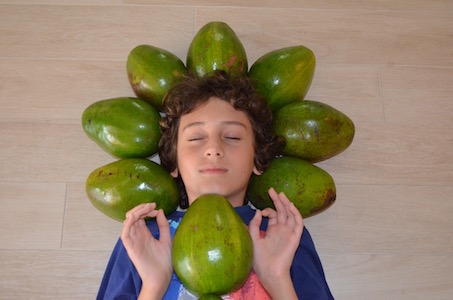
Bounty
The moment we bought the land where we would build our house, I started preparing it for a garden. That was March, 1995.
Since then, we’ve overcome various pest infestations, minor floods, severe drought, several tropical storms, and a pair of nasty hurricanes that claimed their share of plants and trees. Still, as Michael Crichton’s character Ian Malcolm liked to say: life finds a way.
The trick to gardening is getting life to find your way. Left to its own devices, my yard would be (and one might even argue should be) swampland — part of the Florida Everglades. The native live oaks and Florida Cypress on my property are reminders that this was untamed land until very recently.
To tame it, I’ve tamped down original grasses, invasive plants, and weeds and replaced them with St. Augustine grass (which people up north would consider crabgrass). This is the basis of my garden, the rough green canvas. From there, we painted our small corner lot into segments. There’s a butterfly garden with lobster claw heliconia, plumeria, milkweed, crossandra (“orange marmalade”) and bottlebrush. A container herb garden with thyme, rosemary, ginger, chives, sage, and basil. We have a raised vegetable bed for tomatoes, string beans, lettuce, carrots, and more tomatoes. Fruit trees dot the rest of the lawn: orange, lemon, lime, Florida nectarine (a bit of a dud, that one), and the most incredible tree in the garden: avocado.
She’s not much to look at. Now at the ripe old age of twenty-three, her leaves — oblong like the avocados themselves — spread rather haphazardly along branches that should have been properly pruned back in the days before I had learned that skill. This tree has been with us since our first year in the house, and has survived all of the aforementioned garden disasters like a champ. During Hurricanes Wilma and Irma, it was shaken back and forth violently as the storm centers walloped us, its pliable wood giving it the flexibility to withstand 140+ MPH wind gusts. We lost all the avocados during 2017’s Irma, but in 2018, it more than made up for it with a serious bumper crop.
Each of these fantastic fruits weighs about two pounds. One of them makes enough guacamole to satisfy six to eight people, and our venerable tree produces about forty to fifty of them each year.
We are able to share our good fortune with a fair number of people, some of whom look forward to the giant green alligator pears each year. The harvest usually lasts from three to five weeks in August and September. We have to wait until the first few fall off the tree to know when they are ripe. In the past, we’ve picked ones from the tree that seemed to be the right size for maturity, but they wouldn’t ripen on the counter (yes, we tried a paper bag). So after more than two decades, I still can’t predict exactly when they will start falling from the tree, or how quickly. The tree is simply ready when it’s ready. So much for taming.
This year, as seen in the photo above, they ripened at a crazy pace. My wife and I brought them to our workplaces four at a time. The kids gave them to friends. It seemed like as soon as we brought in two, there were three more waiting in the grass.
This is every gardener’s joy: sharing their bounty with friends and neighbors. Our annual tradition ensures at least one visit a year with people we may otherwise only get to correspond with via email or social media. Food brings people together, but garden-fresh food brings people right to your door.
Here’s to a good citrus harvest this winter.

The Morality of Eating

First, Mankind
You May Also Like

First, Mankind
October 19, 2018
Quarantine Cyberterrorism
May 6, 2020